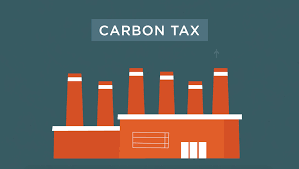AGAINST: proposed modifications to Bill C-205
FOR: CCTV, web-streaming free of trespass or biohazard

I. Install CCTV to monitor, inform, and sensitize citizens to conditions in food-animal breeding, rearing, transport and slaughter sites without trespass or biohazard
Mandate 24/7 CCTV surveillance and recording in all venues where animals are bred, raised, housed, transported, used in any way, or killed.
Publicly web-stream the CCTV output and recruit the public to monitor the animal husbandry conditions online by reporting any violations of existing regulations (crowd-sourcing).
This will at the same time make the public aware of what is permissible in animal husbandry under current law.
Live-streaming and permanently archiving all the CCTV data on the web, openly accessible to all, and coded for time and location, make it possible for all citizens to witness, monitor and report any observed abuses within the existing welfare rules as well as to recommend what rules need to be strengthened.
___________________________________________________
(Note: the following legislation for levying a graduated tax on animal products (II) is not possible without first implementing the measures for informing and sensitizing the public (I). Only public demand and support can lead to the adoption of II.)
II. Legislate Progressive Tax to Incentivize Transition to Non-Animal Alternatives.

Implement, facilitate and accelerate a transition to non-animal alternatives.
Levy a progressive tax, increasing with time, on all consumer purchases of meat, fish, dairy or eggs in supermarkets or restaurants, or any other animal products (such as fur, leather, wool, down). All tax revenue can be used as a rebate on the purchase of non-animal alternatives.
The progressive tax should be levied on all production and vending of meat, fish, dairy or eggs, or any other animal products (such as fur, leather, wool, down). All tax revenue can be claimed by producers and vendors as rebate for the production and sale of non-animal alternatives.
All unclaimed surplus from the tax revenue should be used to provide sanctuaries for animals that survive from the food and fur industries.
Harnad, S:
To Close Slaughterhouses We Must Open People’s Hearts. HuffPost Impact Canada (2015)
Animal sentience: The other-minds problem. Animal Sentience. 2016 1(1)
CCTV, web-streaming and crowd-sourcing to sensitize public to animal suffering. Animal Justice UK, 2, Winter Issue
Mémoire au : Comité permanent de l’agriculture et de l’agroalimentaire (AGRI)
CONTRE: Modifications à la proposition de loi C-205
POUR: Caméras de surveillance et diffusion directe (web-streaming) sans intrusion ou biorisque

I. Installer les caméras de vidéosurveillance pour informer et sensibiliser les citoyens concernant les conditions aux sites d’élevage, de transport et d’abattage d’animaux destinés à l’alimentation sans intrusion ni risque biologique
Surveillance CCTV 24/7 obligatoire et enregistrement dans tous les lieux où les animaux sont engendrés, élevés,hébergés, transportés, utilisés de quelque manière que ce soit, ou tués.
Recruter le public pour surveiller et appliquer les réglementations existantes en matière d’élevage par le biais du web-streaming et croud-sourcing, ainsi que pour sensibiliser le public à la réalité de ce qui est actuellement permis en élevage.
Surveillance CCTV 24/7 obligatoire et enregistrement dans tous les lieux où les animaux sont engendrés, élevés, hébergés, transportés, utilisés de quelque manière que ce soit, ou tués.
Toutes les données de vidéosurveillance sont diffusées en direct et archivées en permanence en accès ouvert sur le Web, codées selon le temps et l’emplacement, afin que le public puisse témoigner, surveiller et signaler tout abus observé contre les règles de bien-être existantes ainsi que pour pouvoir recommander que les règles soient renforcées.
(Noter que II (législation) n’est pas possible sans I (sensibilisation) d’abord. Seuls la demande et le soutien du public peuvent conduire à l’adoption de II.)
II. Légiférer une taxe graduée pour inciter à la transition vers des solutions alternatives non-animales.

Mettre en œuvre, faciliter et accélérer la transition vers des alternatives non-animales.
La taxe graduée, augmentée avec le temps, sur tous les achats de viande, de poisson, de produits laitiers ou d’oeufs dans les supermarchés ou les restaurants, ou tout autre produit animal (comme la fourrure, le cuir, la laine, le bas). Tous les revenus fiscaux sont utilisés comme rabais sur l’achat d’alternatives non-animales.
Taux de taxe sur toute production et vente de viande, poisson, produits laitiers ou oeufs, ou tout autre produit animal (comme la fourrure, le cuir, la laine, le bas). Tous les revenus fiscaux peuvent être réclamés par les producteurs et les vendeurs comme remise pour la production et la vente d’alternatives non-animales.
Tous les excédents non réclamés provenant des recettes fiscales sont utilisés pour fournir des sanctuaires aux animaux qui survivent de l’industrie alimentaire et de la fourrure.
Harnad, S :
Luxe, nécessité, souffrance: Pourquoi je ne suis pas carnivore. Québec humaniste 8(1): 10-13
Pour fermer les abattoirs, il faut les ouvrir. Le Huffington Post Québec 25/6/2015
Plaidoyer pour les animaux. CJN 2644 2017
APPENDIX/ANNEXE
Wiebers, David and Feigin, Valery (2020) What the COVID-19 crisis is telling humanity. Animal Sentience 30(1)
ABSTRACT: The planet is in a global health emergency exacting enormous medical and economic tolls. It is imperative for us as a society and species to focus and reflect deeply upon what this and other related human health crises are telling us about our role in these increasingly frequent events and about what we can do to prevent them in the future.
Cause: It is human behavior that is responsible for the vast majority of zoonotic diseases that jump the species barrier from animals to humans: (1) hunting, capture, and sale of wild animals for human consumption, particularly in live-animal markets; (2) massive overcrowding of animals for human consumption in stressful and unhygienic industrial “factory farm” environments; (3) large-scale close confinement of animals for human consumption, a major direct cause of mounting antibiotic resistance; (4) vast numbers of wildlife species threatened with extinction from habitat incursion and destruction.
Action: Intensive confinement of animals in factory farm operations should be discontinued worldwide for the sake of animals, humans, and the environment, and we should rapidly evolve to eating other forms of protein that are safer for humans, including plant-based meat alternatives and meat produced by culturing animal cells. Additional investment in plant-based agriculture to grow crops to feed humans rather than livestock for human consumption will feed more people while utilizing far less land and water, allowing for the preservation of vital ecosystems for innumerable species.
Rather than simply attempting to react to crises like COVID-19 after death and destruction are already upon us, we need to address the fundamental underlying causes and act now to prevent the numerous disasters that are literally waiting to happen.
OPEN PEER COMMENTARY:
Cao, Deborah (2020) Global risks of intensive animal farming and the wildlife trade. Animal Sentience 30(2)
Eshel, Gidon (2020) Pandemic leadership failures and public health. Animal Sentience 30(3)
Greger, Michael (2020) Whenever possible, treat the cause: Shut down the flu factories. Animal Sentience 30(4)
Anomaly, Jonathan (2020) Cultured meat would prevent the next Covid crisis. Animal Sentience 30(5)
Fox, Michael W. (2020) One planet, one health. Animal Sentience 30(6)
Broom, Donald M (2020) The necessity of human attitude change and methods of avoiding pandemics. Animal Sentience 30(7)
Schuck-Paim, Cynthia (2020) Intensive animal farming conditions are a major threat to global health. Animal Sentience 30(8)
Fawcett, Anne (2020) One Welfare, the role of health professionals, and climate change. Animal Sentience 30(9)
Lovell, Jarret S. (2020) Plant-based diets and COVID-19: Those who harvest crops are at high risk. Animal Sentience 30(10)
Whitfort, Amanda (2020) China’s lack of animal welfare legislation increases the risk of further pandemics. Animal Sentience 30(11)
Bryant, Christopher J. (2020) Innovation in meat production: a problem and an opportunity. Animal Sentience 30(12)
Feigin, Svetlana (2020) It does not cost the earth to be kind. Animal Sentience30(13)
Morand, Serge (2020) New approach to health and the environment to avoid future pandemics. Animal Sentience 30(14)
Wyatt, Tanya (2020) Harm, Earth Jurisprudence and human/nonhuman relationships. Animal Sentience 30(15)
Robbins, Jesse (2020) Be wary of simple solutions to complex problems. Animal Sentience 30(16)
Marcum, James A (2020) Can we handle the truth of what COVID-19 is telling us?. Animal Sentience 30(17)
Skerratt, Lee (2020) Wildlife health systems. Animal Sentience 30(18)
Lee, Kelley (2020) Rethinking global governance to address zoonotic disease risks: Connecting the dots. Animal Sentience 30(19)
Kona-Boun, Jean-Jacques (2020) Anthropogenic suffering of farmed animals: the other side of zoonoses. Animal Sentience 30(20)
Toates, Frederick (2020) Covid-19, evolution, brains and psychology. Animal Sentience 30(21)
Bergstrom, Bradley J. (2020) Re-engage with the world for global health and animal welfare. Animal Sentience 30(22)
Davis, Tyler; Ireland, Molly E; Van Allen, Jason; and Worthy, Darrell A (2020) Zoonotic realism, computational cognitive science and pandemic prevention. Animal Sentience 30(23)
Gerlai, Robert (2020) Tribal brains in the global village: Deeper roots of the pandemic. Animal Sentience 30(24)
Wehbe, Yzar S. and Shackelford, Todd K. (2020) Appealing to human intuitions to reduce animal abuse. Animal Sentience 30(25)
Hawkins, Ronnie Z. (2020) Thinking longer, looking deeper. Animal Sentience 30(26)
Urbanik, Julie (2020) Reinforcing boundaries does not contribute to change. Animal Sentience 30(27)
Marazziti, Donatella (2020) Reflections on psychological and psychiatric consequences of COVID-19 pandemic. Animal Sentience 30(28)
Figueroa, Daniela and Duprat, Ximena (2020) Remedying anthropogenic zoonoses. Animal Sentience 30(29)
RESPONSE:
Wiebers, David and Feigin, Valery (2021) Heeding the call of COVID-19. Animal Sentience 30(30)
Abstract: Our commentators have provided a wide range of valuable perspectives and insights from many fields, revealing a broad interest in the subject matter.
Nearly all the commentaries have helped to affirm, refine, expand, amplify, deepen, interpret, elaborate, or apply the messages in the target article. Some have offered critiques and suggestions that help us address certain issues in greater detail, including several points concerning industrialized farming and the wildlife trade.
Overall, there is great awareness and strong consensus among commentators that any solution for preventing future pandemics and other related health crises must take into account not only what is best for humans but also what is best for nonhumans and the environment, given the profound interconnectedness of all life.
